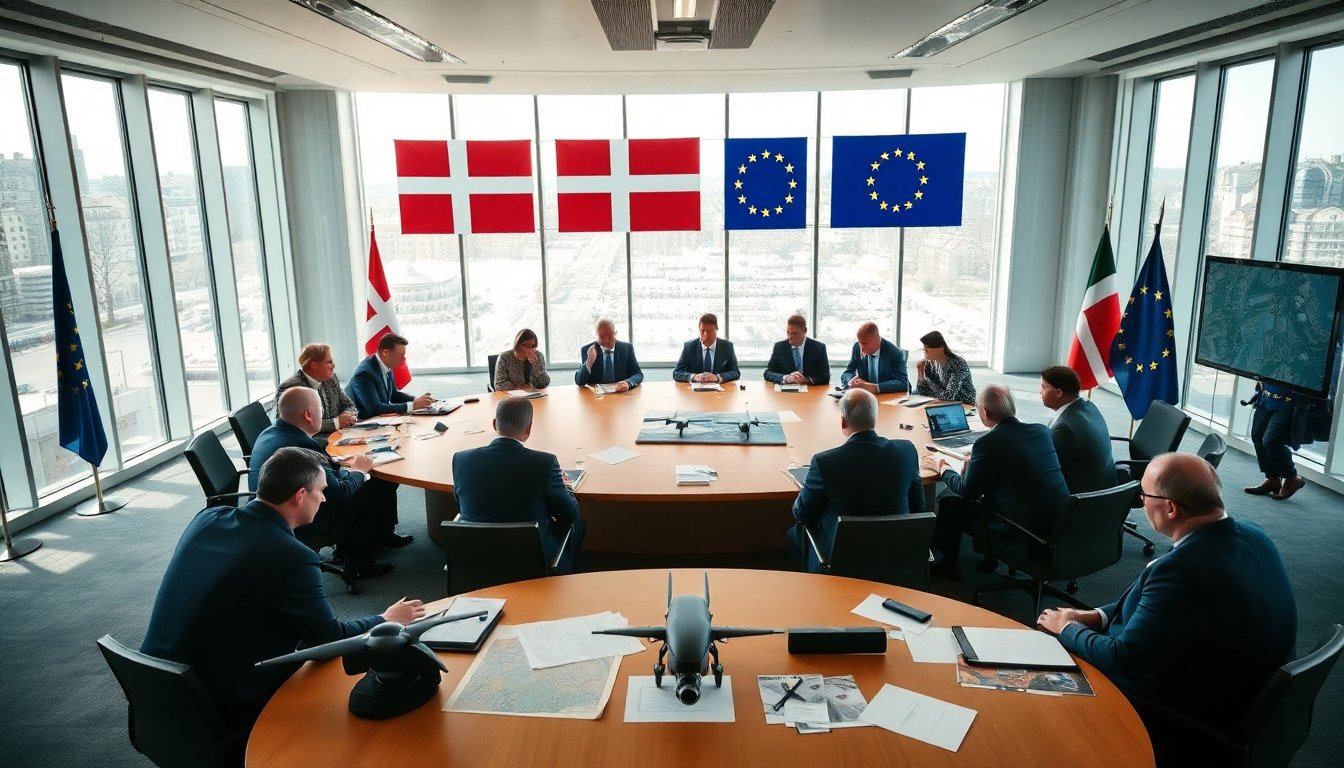Table of Contents
In response to recent drone incidents near military installations and airports in Denmark, European Union leaders gathered in the Danish capital. The summit, hosted by Danish Prime Minister Mette Frederiksen, focused on enhancing collaborative defense mechanisms against the rising threat of hybrid warfare, particularly from Russia.
Frederiksen opened the discussions with a stark warning about the fragile security situation in Europe. She emphasized that hybrid threats could arise anywhere, stating, “One day it’s Poland, the other day it’s Denmark, and next week it could be another nation facing sabotage or drone activity.” This statement set a serious tone for the meeting.
Concerns about hybrid warfare
The concept of hybrid warfare combines conventional military strategies, such as deploying tanks and missiles, with unconventional tactics, including cyberattacks and misinformation campaigns. French President Emmanuel Macron echoed the need for vigilance, urging EU nations to remain cautious amid escalating tensions with Russia.
Macron’s call for caution
Macron stressed the importance of a balanced response, stating, “We must be strong enough to deter aggressions, yet cautious enough to prevent escalation.” His remarks, made during a break in the summit discussions, highlighted the delicate balance leaders must maintain while addressing these hybrid threats.
Italian Prime Minister Giorgia Meloni also emphasized caution, advising against rash reactions to provocations. “We must consider our responses carefully,” she said, underscoring the necessity of equipping nations without overreacting to threats.
Recent drone incidents and military readiness
The backdrop of the summit included a series of drone-related incidents that disrupted operations in Denmark, leading to the temporary closure of Copenhagen airport. In response, Danish authorities implemented a specialized radar system to monitor airspace more effectively. Although the perpetrators remain unidentified, Frederiksen pointedly remarked, “There is only one country willing to threaten us, and it is Russia.”
To strengthen defense capabilities, the meeting saw contributions from several EU nations, including France, Germany, the Netherlands, Sweden, and the UK, which dispatched aircraft, naval vessels, and air defense systems to assist Denmark’s military readiness.
International implications of hybrid threats
As discussions progressed, the implications of Russia’s aggressive posture in Europe took center stage. Macron noted that Russia has shown a willingness to engage in disruptive actions, including cyberattacks during elections and military incursions into neighboring countries such as Ukraine. The summit underscored the critical need for European nations to unify their defenses.
Poland and Romania have also reported similar drone incursions, prompting Macron to suggest that NATO’s response must escalate if provocations from Russia persist. He stated, “Under the doctrine of strategic ambiguity, we cannot rule anything out,” referencing the potential for military action, including downing hostile aircraft.
Future of European defense
Frederiksen’s call for rearmament resonated throughout the discussions, as leaders recognized the urgent need for enhanced military capabilities. “I want us to innovate and acquire more advanced technologies, especially in the realm of drones,” she asserted. Her comments reflect a broader concern that many leaders believe Europe is facing its most perilous situation since the end of World War II.
Frederiksen opened the discussions with a stark warning about the fragile security situation in Europe. She emphasized that hybrid threats could arise anywhere, stating, “One day it’s Poland, the other day it’s Denmark, and next week it could be another nation facing sabotage or drone activity.” This statement set a serious tone for the meeting.0
Frederiksen opened the discussions with a stark warning about the fragile security situation in Europe. She emphasized that hybrid threats could arise anywhere, stating, “One day it’s Poland, the other day it’s Denmark, and next week it could be another nation facing sabotage or drone activity.” This statement set a serious tone for the meeting.1


